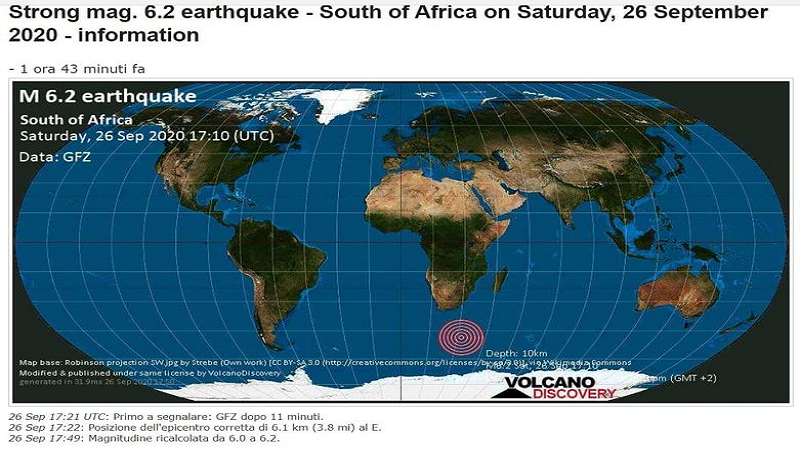World renown humanitarian aid organisation Gift of the Givers has assured that there is no need to panic after some residents in Cape Town were shaken by an earthquake at the weekend. There were no reports of any injuries, damage to property or infrastructure and no tsunami warning was issued. Resident along the coast are however being advised to be on the lookout for rogue waves.
The Council for Geosciences confirmed that the South African Seismograph Network recorded a 2.5 local magnitude earthquake at around 8.41 pm on Saturday. This, it said in a statement, was unrelated to a 6.4 magnitude earthquake reported 1,600 kilometres southeast of South Africa about an hour and a half earlier. According to reports, tremors were felt in several areas in Cape Town. On Sunday, a 2.3 magnitude was also registered and was, once again, felt by residents.
Executive manager of Applied Geosciences at the Council for Geosciences David Khoza stated however that it was unlikely that Cape Town experienced the effects of the bigger earthquake off the south coast. He added that the Western Cape is not unfamiliar with seismic events and that there have been several that caused damage in the past.
“The 6.2 magnitude event basically happened a little bit earlier and because it was so far away, over 1,600 kilometres, it was highly unlikely that we felt the event, so we’re attributing it to the much smaller event that happened just north of Durbanville.”
The geologist for Gift of the Givers Foundation, Dr Gidoen Groenewald explained that an earthquake is caused by the movement of the tectonic plates which have a ripple effect on the rocks underground. Although he had not wanted to confirm whether the tremors were related to the 6.2 quake, he stated that the plates are connected and that shockwaves are realistic.
“There are big cracks called ‘transverse faults’ and where these plates meet, they grind together. One of these cracks runs from the epicentre all the way through to Cape Point and past Cape Town,” he said.
In simple terms, Dr Groenewald said the Richter scale, used to measure seismic activity, is an exponential scale.
“On the Richter scale, 2 would sound like a Boeing flying closely over your house; 4 would see crockery moving; 5.5-6 would result in plaster falling from the walls; 7 would see buildings falling apart and 10 would be total destruction,” he explained briefly.
“At 6.2, the wave will move along the fault zone, which is about 6-7 meters wide, and can travel all the way to Cape Town in about 2/3 hours. The after-waves will be much slower and lagging behind.”
He added that it was “on time” with another quake in September 1969, often attributed to the death of struggle stalwart Imam Haron AR, who was killed by apartheid police while in detention. Groenewald reaffirmed that there is no need for panic, but emphasised that those along the South coast need to be vigilant.
“Today (Monday) and the next few days, people along the coasts all the way from Durban to CPT on the eastern side of SA, must be on the look out for ‘rogue waves’- these are about 2 meters high or less, but they’ve got a lot of energy.
“South Africa’s got a very shallow sea when the waves from the deep ocean toward the shallow shelf the bottom of seat kind of hooks onto the floor of the sea and the heads of these waves will start rising and get very high. But we have no indication of these things happening,” said Groenewald, noting numerous monitoring agencies and that the country is stable “geologically”.
“People must be worried about the smaller rogue waves that can come up the beach and steal your children and clothes or whatever. Because they run very far up the edge of the sand and move back very quickly.”
VOC






 WhatsApp us
WhatsApp us 

